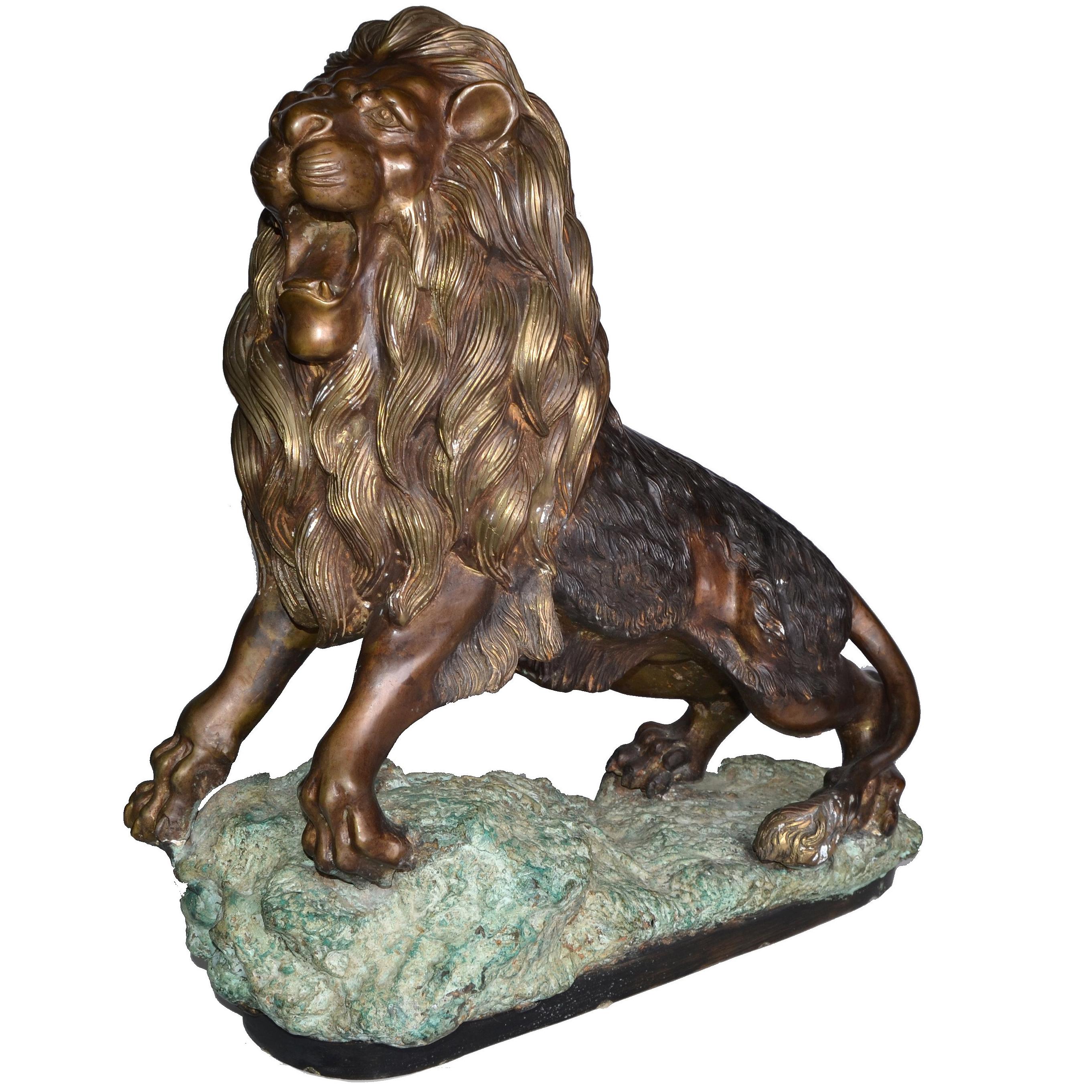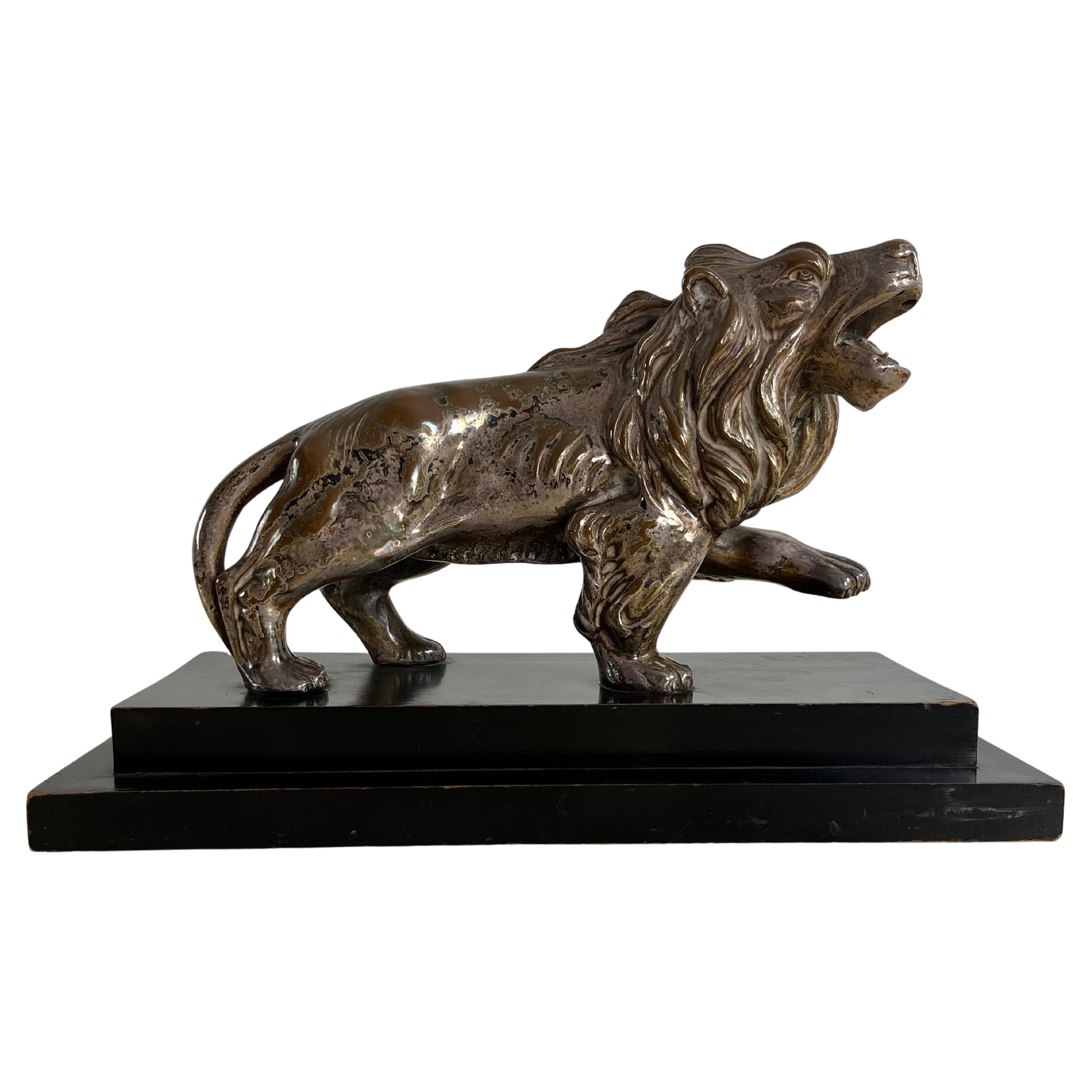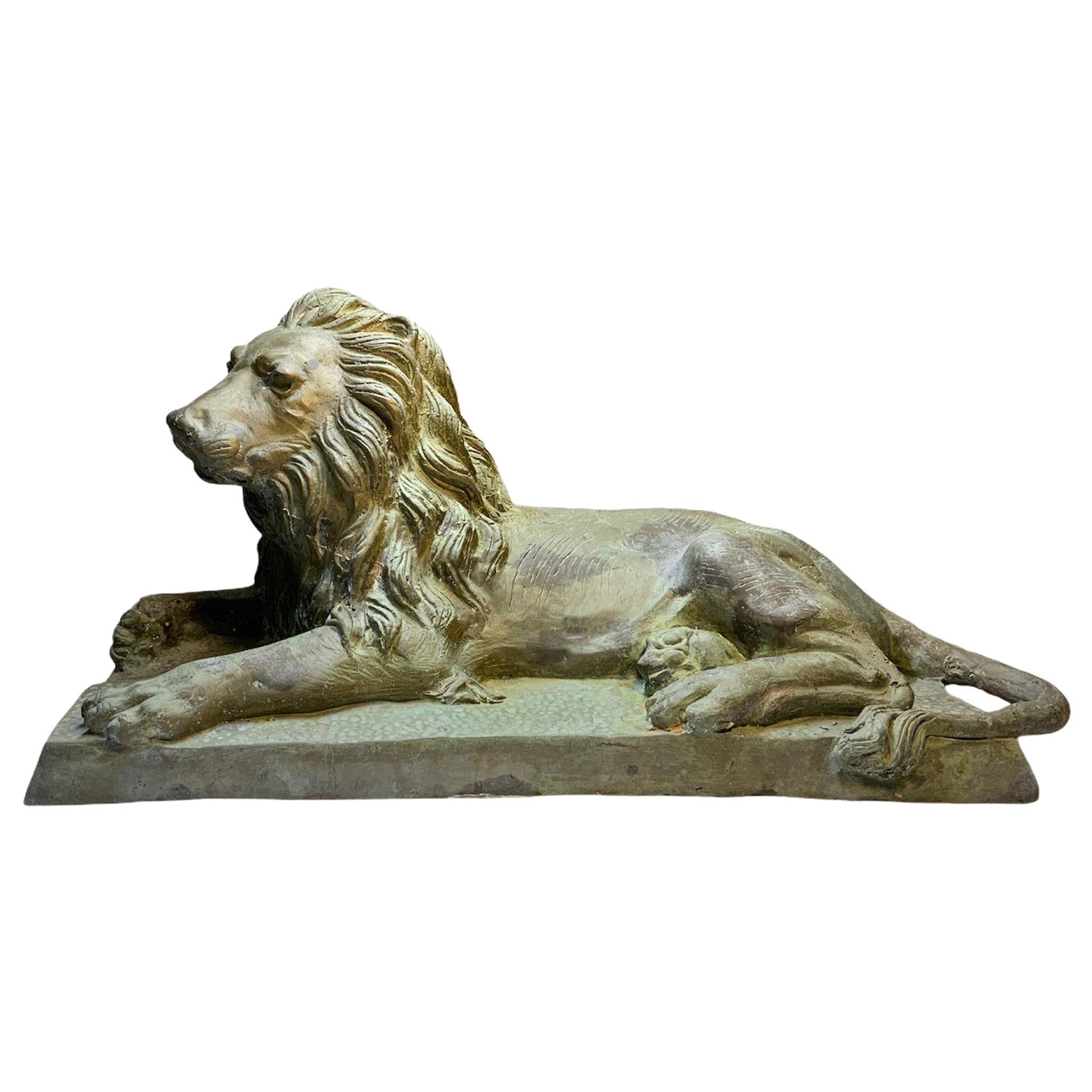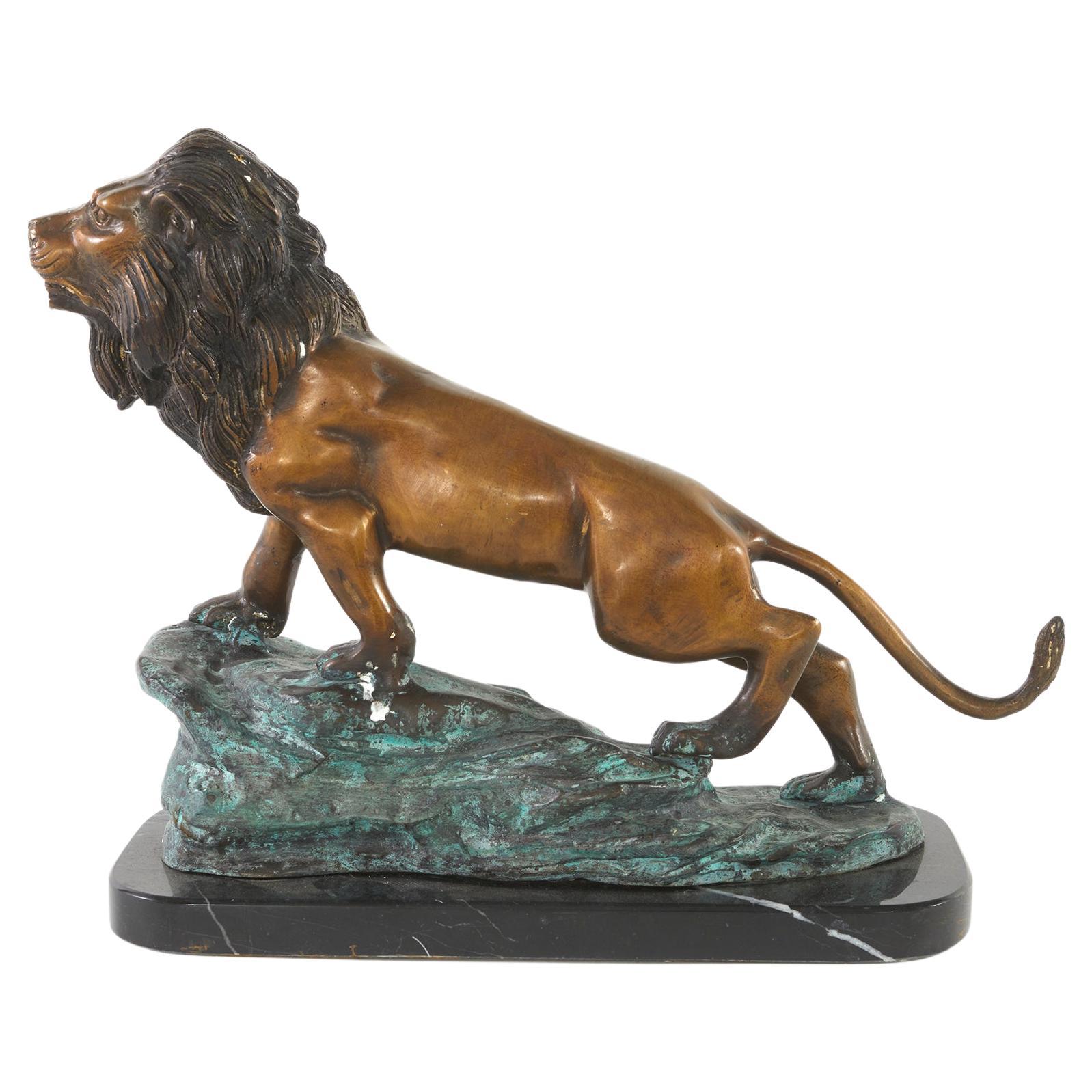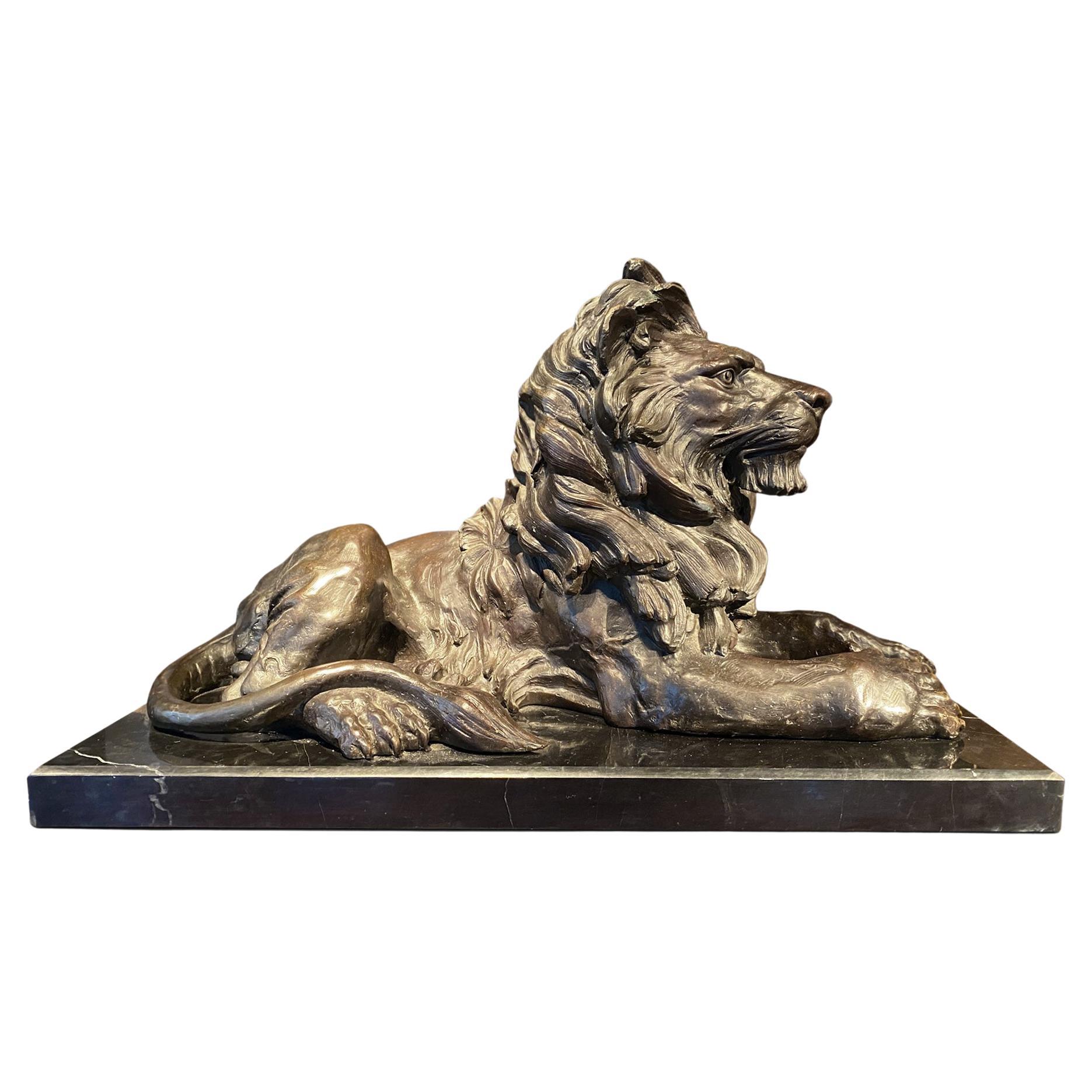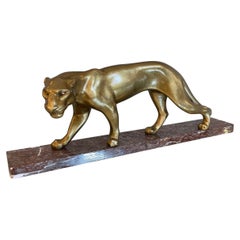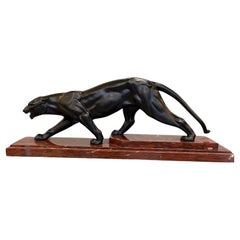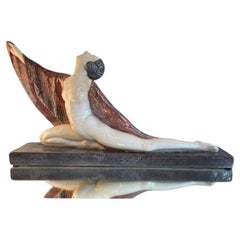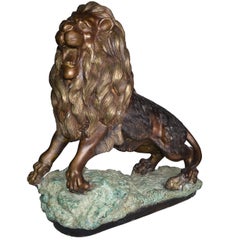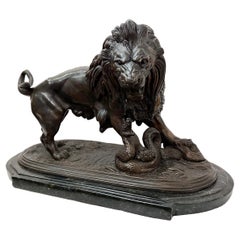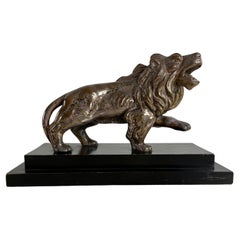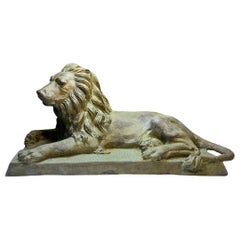Items Similar to Art Deco Bronze Animal Lion Sculpture
Video Loading
Want more images or videos?
Request additional images or videos from the seller
1 of 15
Art Deco Bronze Animal Lion Sculpture
$3,714.25
£2,765.01
€3,100
CA$5,087.59
A$5,658.51
CHF 2,954.70
MX$68,858.02
NOK 37,735.99
SEK 35,389.70
DKK 23,599.22
Shipping
Retrieving quote...The 1stDibs Promise:
Authenticity Guarantee,
Money-Back Guarantee,
24-Hour Cancellation
About the Item
Art Deco bronze animal lion sculpture
Size: W 38 cm, D 14 cm, H 38 cm
Original patina.
A video of the item Is available upon request.
- Dimensions:Height: 14.97 in (38 cm)Width: 14.97 in (38 cm)Depth: 5.52 in (14 cm)
- Style:Art Deco (Of the Period)
- Materials and Techniques:
- Place of Origin:
- Period:
- Date of Manufacture:1930
- Condition:Wear consistent with age and use. Original patina.
- Seller Location:IT
- Reference Number:1stDibs: LU2072326524482
About the Seller
4.9
Platinum Seller
Premium sellers with a 4.7+ rating and 24-hour response times
Established in 1986
1stDibs seller since 2016
219 sales on 1stDibs
Typical response time: <1 hour
- ShippingRetrieving quote...Shipping from: Cerea, Italy
- Return Policy
Authenticity Guarantee
In the unlikely event there’s an issue with an item’s authenticity, contact us within 1 year for a full refund. DetailsMoney-Back Guarantee
If your item is not as described, is damaged in transit, or does not arrive, contact us within 7 days for a full refund. Details24-Hour Cancellation
You have a 24-hour grace period in which to reconsider your purchase, with no questions asked.Vetted Professional Sellers
Our world-class sellers must adhere to strict standards for service and quality, maintaining the integrity of our listings.Price-Match Guarantee
If you find that a seller listed the same item for a lower price elsewhere, we’ll match it.Trusted Global Delivery
Our best-in-class carrier network provides specialized shipping options worldwide, including custom delivery.More From This Seller
View AllGolden Panther with Marble Base
Located in IT
Sculpture of a panther in a gold finish with a red marble base. The panther’s body is depicted in motion, with an elegantly long tail. This piece is perfect for enhancing any corner ...
Category
Vintage 1970s Italian Animal Sculptures
Materials
Marble
Black Panther Statue With Red Marble Base
Located in IT
Black bronze statue of a panther, signed Noller. The statue simulates the movement of the animal, emphasised by the different positions of the paw...
Category
Vintage 1920s Italian Animal Sculptures
Materials
Marble, Bronze
1970 White Ceramic Panther
Located in IT
A white ceramic panther from the 1970s with a silver-plated eye detail.
The panther shows signs of wear given by time, but gives it the right fl...
Category
Vintage 1970s Italian Animal Sculptures
Materials
Ceramic
Deco-Style Ceramic Dancing Sculpture
Located in IT
Sculpture depicting a ballerina from the 1940s. The ballerina stands on a burgundy-glazed base, with a white body, and her movement is enhanced by a colorful cloak whose draping adds...
Category
Vintage 1940s Italian Figurative Sculptures
Materials
Ceramic
Lost-Wax Cast Bronze Gallo ( Rooster) Sculpture by Luciano Minguzzi
By Luciano Minguzzi
Located in IT
Gallo - Rooster Sculpture by Luciano Minguzzi made of lost wax cast bronze with certificate, work number 390/1500.
Sculpture weighing 17kg, it depicts a rooster with the peculiarit...
Category
Mid-20th Century Italian Animal Sculptures
Materials
Bronze
1980s Novello Finotti Cin Cin With Figs Bronze Sculpture H 47cm
By Novello Finotti
Located in IT
Bronze sculpture by Novello Finotti from the 1980s entitled 'Cin cin cin con i fichi'.
A truly one-of-a-kind sculpture for lovers of truly special and unique pieces.
Numbered pie...
Category
Vintage 1980s Italian Figurative Sculptures
Materials
Bronze
You May Also Like
Neoclassic French Heavy Solid Bronze Lion
Located in Miami, FL
Neoclassic French large and very heavy solid bronze lion on a marble base.
No markings.
Very detailed and lovely made.
O-636-335
Category
Mid-20th Century French Neoclassical Animal Sculptures
Materials
Marble, Bronze
Vintage Cast Metal Lion
Located in New York, NY
A circa 1920 French patinated metal lion fighting a snake.
Measurements:
Height of body: 9.5"
Width: 14.5"
Depth: 7.5"
Category
Vintage 1920s French Animal Sculptures
Materials
Metal
Large Art Deco "Walking Lion" Sculpture, 1930s
Located in Palermo, IT
Large Art Deco "walking lion" sculpture, 1930s
Silver metal.
Complete and in good condition.
Category
Vintage 1930s Italian Animal Sculptures
Materials
Metal
Large Lion Figure Bronze Sculpture
Located in Guaynabo, PR
This is a very well made large lion figure bronze sculpture laying down in a rectangular base. The carving details of the thick mane, paws, tail, nose, and...
Category
20th Century Unknown Neoclassical Revival Animal Sculptures
Materials
Metal
$1,200 Sale Price
20% Off
Bronze / Marble Lion Sculpture Decorative Piece
Located in Tarry Town, NY
Early 20th century Art Nouveau style gilt bronze / black marble base lion sculpture decorative piece. The piece is in great condition. Minor wear consistent with age / use. Maker's m...
Category
Early 20th Century French Art Nouveau Animal Sculptures
Materials
Marble, Bronze
Stunning Signed by Barye Strong Large Lion Bronze Statue
By Antoine-Louis Barye
Located in Petworth,West Sussex, GB
This intimidating lion takes a break and relaxes. He lies down and looks as if he puts his paw in paw and waits patiently for the next encounter. He is the gate keeper he stays alert at all times and watches for any unknown creatures to cross into his territory. The features on the lion are magnificent and are very life like. His undercoat is long and you can see the fur stringing off of his underside while he puts his legs to the side. His mane is grand and he has gigantic paws which will take anyone or thing out in one swift swipe. You can see the details beautifully. This lion has a brown patina and was casted using the “Lot Wax Method” it is mounted on a black marble base. This sculpture is signed by Barye...
Category
Antique 19th Century French Empire Animal Sculptures
Materials
Marble, Bronze
More Ways To Browse
1930 Bronze Sculpture
French Art Deco Bronze Sculptures
Art Deco Lion
1930 Lion
Murano Glass Fish
Mid Century Cat Sculptures
Fish Stand
Art Deco Lion
French Bronze Dog
Bronze Fish Sculpture
Cast Bronze Horse
Door Stop
Duck Sculptures
Vintage Figurines Made In Italy
Antique Wooden Bear
Nest Sculpture
Dove Bird
White Horses Sculpture
